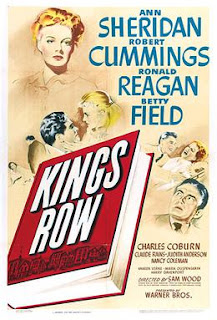Recently I watched part of an improvisational feature film.
Improv is a great skill for low/no-budget filmmakers. When you get on set, even the most carefully-planned production will require some last-minute workarounds and creative problem solving. Being able to meet those challenges quickly and keep everything moving is essential. And if you keep re-writing and re-writing in the hope of achieving a "perfect" script, you'll never get around to making your movie anyway.
I was reminded of an interview I'd seen with B-movie director Ray Dennis Steckler. He said that he'd begin shooting his films without a script, because by the time he got everything together that he'd need to produce the script, it would be too late to make the movie. I know what he means.
Thinking back on it, when I first started making my own little movies with the family video camera, I only recall one time where I went out of my way to write a completed script. It was for a Hitchcock-inspired comic thriller about two detectives investigating mysterious pools of what appear to be blood that are materializing in a man's basement, but the culprit turns out to be a leaking bottle of ketchup. But even there I think I veered from the script quite a bit after I began shooting. My problem is I get impatient and begin improvising when I see other ideas present themselves in the moment.
I've made quite a few short films over the years without a script, though I have a clear idea of the action and plot before I begin and even then, dialogue is usually at a minimum in those projects (or consists solely of voice over, which I write out in advance, and then improvise the action around).
I do wonder about improv features, though. Cassavetes mastered this approach, but he was working with first-rate actors and would workshop his ideas extensively before committing them to film. If you're relying on the actors to come up with their own dialogue, they really need to be able to get into the characters and have a fully-fleshed idea of how they would react under the situations. I'm reminded of an acting exercise -- which I think is mentioned in the film My Dinner with Andre, actually -- where you take characters from an established play, but come up with a scene for them that does not occur in the play, and have the actors improvise how those characters would act under the circumstances. If you're going for a feature-length film, something along those lines seems like a solid approach to fleshing out the characters.
And speaking of My Dinner with Andre, it's another one of those films, like Kevin Smith's Clerks, that consists almost entirely of people talking. Some people seem to think this approach is "easy", but don't consider how carefully scripted and acted these extended conversations are, not to mention the technique that has to go into making them interesting for 90 minutes or more.
There's another issue I have with improv feature filmmaking: as a viewer, I often find the approach tedious after a certain point. I have an easier time watching an improvised short film than sitting through an hour or more of it.









